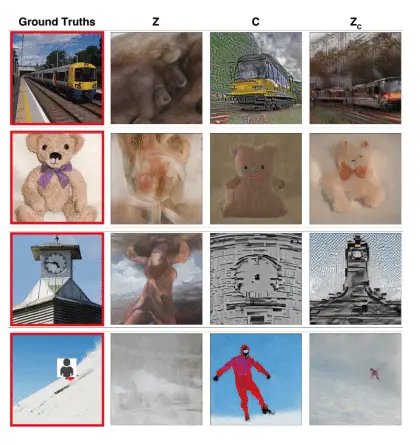Scientists Develop AI to Create Pictures from Brain Scans
Comprehensive research conducted by the Osaka University researchers suggests that artificial intelligence has made a significant leap forward in developing technology capable of constructing pictures from brain scans. An AI-powered algorithm reconstructed over one thousand images with 80% accuracy, by taking account of the brain scans of people staring at the images. The images ranged from a toy bear, to an aircraft, a clock, and a train.
Visit ChatGPT Detector to test your content originality.
The research paper that is due to be presented at the computer vision conference in Vancouver this summer is still yet to be peer-reviewed. However, it is strongly believed that these results could assist in analysing how animals perceive the world and even aid communication with paralysed people. The team at Osaka University gained assistance from the popular AI program called Stable Diffusion, developed by the British company Stability AI which has been used to create text-to-image translations.
Stable Diffusion’s attempt to read minds.
This is not fiction but a reality thanks to efforts out of Osaka University in Japan.
First column: Presented images Other columns: Reconstruction from human brain activity (fMRI)

Modifications to the AI Program
The professors at the Graduate School of Frontier Biosciences modified Stable Diffusion to compare the brain scans of four different people, and the ten thousand images they looked at. This new artificial intelligence was designed to draw information from various parts of the brain associated with image perception such as the occipital and temporal lobes.
You can use Chatgpt prompts for Midjourney during your creative process to bring your thoughts to life as images
Experimental Limitations
The scientists proved that their method was capable of producing high-resolution images with a great degree of semantic fidelity, however the experiment only involved four people so extending the practice needs further training of the program.
Conclusion
This state-of-the-art research performed by the Osaka University team is a strong indication of the potential of artificial intelligence being used to create pictures from brain scans, which could potentially be used to analyse how animals perceive the world, help communication with paralysed people, or even be used to record dreams. Until further experiments are conducted, its full potential will remain unknown.
1. Further experimentation with this AI powered algorithm could help uncover more information on how the brain processes and sees images. This could result in advancements in neuroscience which could aid in treating neurological conditions such as Alzheimer’s or dementia.
2. An additional application for this technology is medical diagnostics, with doctors potentially using brain scans to diagnose various conditions. There could even be implications for further applications such as detecting certain types of cancer from brain scans, using AI to construct images from the patient’s brain.
3. Although currently restricted to a scientific laboratory setting, if extended to a commercial level, AI could potentially be used to read and construct images from people’s minds, with potential for applications such as virtual reality video-gaming or constructing images in movies.
4. As AI powered algorithms become more sophisticated, their use in medical fields can be extended. For example, AI can potentially be used to help stroke patients recover faster by reading the brain scans and providing information regarding how much of the patient’s memory has been affected by the stroke.
5. With the increasing advancements being made in AI technology, it is likely that future versions of the algorithm will be able to construct more complex images from brain scans, as well as accurately interpreting more information from the brain.
6. AI technology could also be used to create entire scenes from a person’s mind, rather than just individual images. This could include things such as being able to view the memories of a person, or even having a realistic recollection of a dream.
7. The potential applications of AI when combined with brain scans are numerous. From constructing pictures of what a person is visualizing, to helping diagnose and treat medical ailments, this technology has the potential to revolutionize and improve many aspects of modern life.
8. With all these exciting possibilities, there are also serious ethical considerations. Issues such as protecting the privacy of individuals and ensuring that AI is not used for any malicious or unethical purposes needs to be addressed.
9. As this technology develops, it is also important to consider the environmental impact of increased AI usage on brain scans. Energy consumption is one of the key problems associated with AI, so it is important to think about ways to reduce the energy consumption associated with running AI algorithms.
10. Finally, the accuracy and reliability of AI algorithms need to be improved in order for them to be of practical use for reconstructing images from brain scans. Research is being conducted to explore ways of improving the accuracy and reliability of AI algorithms, so that they can be safely and reliably used in the future.


